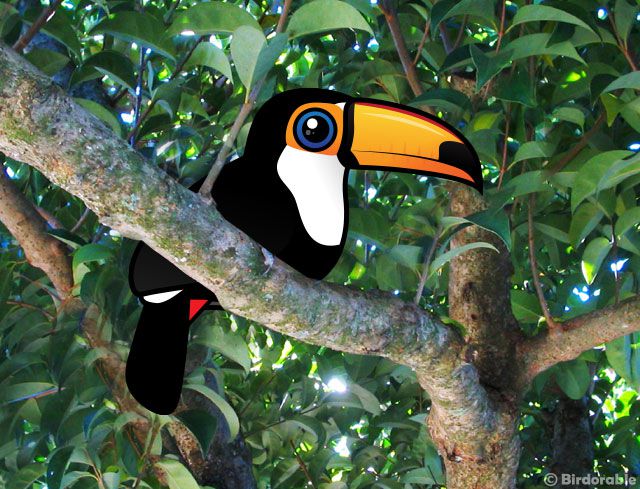Fun Facts About Toucans

There are about forty different species of toucan, spread over five genera. These include toucans and their smaller cousins, aracaris and toucanets. Here are some fun facts about the toucan family.
- All toucans have colorful and extremely large bills. Despite their size, the bills are composed of a kind of spongy material, and are extremely lightweight.
- Having a large bill is beneficial in foraging for fruit -- the bird can grab a lot of food without moving its whole body. The oversized bill also helps the toucan regulate its body heat in the steamy rainforest.
- Toucans are cavity nesters, but they aren't able to excavate their own nest holes with much success. They use cavities excavated by other birds, like woodpeckers.
- The smallest birds in the family range from about 11 or 12 inches long (the Green Aracari or the Lettered Aracari).

Green Aracari by Sham Edmond [CC BY 2.0]
- The largest species of toucan is the Toco Toucan, which reaches 29 inches in length.
- Toucans are able to fly, but they have relatively short wings. They are resident birds within their range (they do not migrate), and tend to get around their forest canopy habitat by hopping from branch to branch.
- The Toco Toucan is the most well-known species of toucan; it is sometimes known simply as "Toucan" or "Common Toucan".

Toco Toucan by William Warby [CC BY 2.0]
- The Keel-billed Toucan is the national bird of Belize.
- Toucans are found in the Neotropics, meaning they are New World birds found in tropical habitat. They range from southern Mexico into northern parts of South America. They are also found in the Caribbean.
- The constellation Tucana, a group of stars in the Southern Sky, is named after the toucan. It was established by Dutch astronomer Petrus Plancius and was first published in 1598 in Amsterdam.
- We have three birds in the toucan family here. Check out our Birdorable Keel-billed Toucan, Birdorable Green Aracari; and Birdorable Toco Toucan!









Comments
Leave a comment
Thank you!